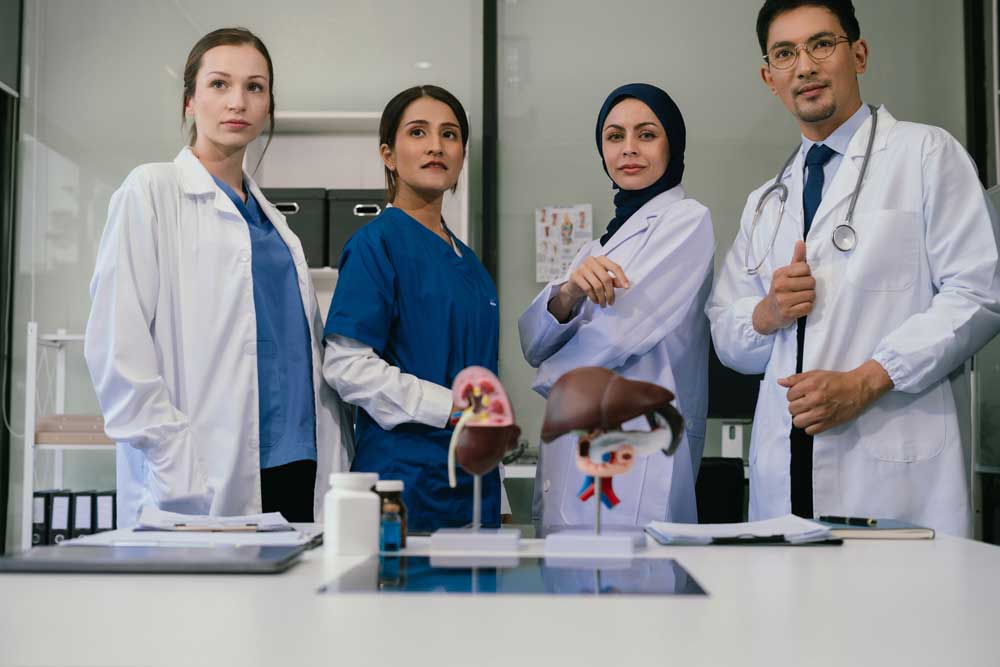Introduction
Paediatric imaging presents unique challenges for radiographers, requiring specialised skills and knowledge to ensure high-quality diagnostic outcomes while prioritising patient safety and well-being. Working with children demands adapted approaches to imaging techniques, effective communication strategies, and a deep understanding of child protection and radiation safety principles. As a student of diagnostic imaging, this essay explores the multifaceted challenges faced by radiographers in paediatric imaging and evaluates the strategies employed to overcome them. The discussion will focus on adapted imaging techniques, patient care and communication, child protection considerations, and radiation protection with an emphasis on dose optimisation. By examining these key areas, this essay aims to highlight the importance of tailored practices in ensuring both diagnostic accuracy and the welfare of young patients.
Adapted Approaches and Techniques in Paediatric Imaging
Imaging children differs significantly from imaging adults due to anatomical, physiological, and developmental variations. Children often have smaller body structures and higher tissue sensitivity, necessitating modifications in equipment settings and imaging protocols (Seidenwurm and Schwartz, 2018). For instance, the use of smaller field-of-view settings and adjusted exposure factors is common to capture detailed images while minimising radiation dose. Furthermore, immobilisation devices such as sandbags or specialised holders are frequently employed to reduce movement during scans, as children may struggle to remain still (Hardy and Boynes, 2007). However, these tools must be used with caution to avoid distress or injury, reflecting the need for radiographers to balance diagnostic requirements with patient comfort.
Technological advancements, such as digital radiography and fast-acquisition imaging systems, also play a crucial role in overcoming the challenges of paediatric imaging. These technologies reduce scan times, thereby decreasing the likelihood of motion artefacts—a common issue with young, uncooperative patients (Seidenwurm and Schwartz, 2018). As a radiographer in training, I recognise that mastering these adapted techniques requires not only technical competency but also an awareness of their limitations. For example, while immobilisation aids can be effective, they may not always be suitable for distressed or medically unstable children, highlighting the need for flexibility and problem-solving skills in clinical practice.
Patient Care and Communication Strategies
Effective communication is paramount in paediatric imaging, as it helps alleviate anxiety for both the child and their caregivers. Children may experience fear or confusion during imaging procedures due to unfamiliar environments and equipment. Radiographers must, therefore, employ age-appropriate communication techniques, such as using simple language for younger children or engaging in distraction techniques like storytelling or play (Hardy and Boynes, 2007). For instance, explaining an X-ray machine as a “big camera” can make the process less intimidating for a child. Additionally, involving parents or guardians in the procedure—where safe and feasible—can provide emotional reassurance to the patient.
Moreover, radiographers must be adept at reading non-verbal cues, as younger children may not articulate their discomfort or fear. This skill is particularly important when imaging children with special needs, who may require additional patience and tailored approaches. Indeed, building trust quickly is often a challenge, yet it remains essential for ensuring cooperation during imaging. As a student, I have come to appreciate that communication extends beyond verbal interaction; it encompasses empathy, active listening, and the ability to adapt to the unique needs of each child and family.
Child Protection Considerations
Child protection is a critical responsibility for radiographers working in paediatric imaging. Radiographers must be vigilant in identifying signs of abuse or neglect, as imaging may reveal evidence such as unexplained fractures or injuries inconsistent with the reported history (Royal College of Radiologists, 2017). UK guidelines mandate that healthcare professionals, including radiographers, follow safeguarding protocols and report concerns to the appropriate authorities, ensuring the child’s safety is prioritised (Department of Health and Social Care, 2018).
In practice, this requires a sound understanding of legal and ethical frameworks, such as the Children Act 1989, which underpins child welfare in the UK. Radiographers must also navigate sensitive situations with professionalism, maintaining confidentiality while adhering to reporting obligations. As a student, I understand that this aspect of the role can be emotionally challenging, yet it is an integral part of ensuring holistic care. Training in safeguarding procedures is, therefore, essential, as it equips radiographers to act decisively and appropriately in the best interests of the child.
Radiation Protection and Dose Optimisation
Radiation protection is a fundamental concern in paediatric imaging due to children’s heightened sensitivity to ionising radiation and the cumulative risk of exposure over their lifetime. The principle of ALARA (As Low As Reasonably Achievable) underpins all imaging practices, guiding radiographers to minimise radiation doses while maintaining diagnostic image quality (International Commission on Radiological Protection, 2007). Techniques such as collimation, shielding, and the use of low-dose protocols are routinely applied to achieve this goal. For example, lead aprons or gonadal shields are used to protect sensitive areas of the body, particularly in younger patients (Seidenwurm and Schwartz, 2018).
Additionally, dose optimisation involves selecting the most appropriate imaging modality. Ultrasound and MRI, which do not use ionising radiation, are often preferred over CT or X-ray when clinically feasible, especially for repetitive or follow-up imaging (Royal College of Radiologists, 2017). However, when ionising radiation is unavoidable, radiographers must justify each exposure and ensure adherence to strict protocols. As a student, I have learned that staying updated on advancements in dose reduction technologies and guidelines is vital for minimising risk. This responsibility underscores the importance of continuous professional development in ensuring patient safety within the evolving field of diagnostic imaging.
Conclusion
In conclusion, paediatric imaging poses distinct challenges for radiographers, necessitating specialised techniques, effective communication, and a steadfast commitment to child protection and radiation safety. Adapted imaging approaches, such as tailored equipment settings and immobilisation aids, address the anatomical and behavioural differences in children, while empathetic communication strategies help mitigate anxiety and foster cooperation. Child protection considerations highlight the radiographer’s broader role in safeguarding vulnerable patients, requiring both clinical vigilance and adherence to legal frameworks. Moreover, radiation protection and dose optimisation remain central to minimising long-term risks, guided by principles like ALARA and the use of non-ionising modalities where possible. As a diagnostic imaging student, I recognise that overcoming these challenges demands a blend of technical expertise, emotional intelligence, and ongoing learning. Ultimately, the ability to provide high-quality care in paediatric imaging not only enhances diagnostic outcomes but also ensures the safety and well-being of some of the most vulnerable patients in healthcare.
References
- Department of Health and Social Care. (2018) Working Together to Safeguard Children: A Guide to Inter-Agency Working to Safeguard and Promote the Welfare of Children. HM Government.
- Hardy, M. and Boynes, S. (2007) Paediatric Radiography. Blackwell Publishing.
- International Commission on Radiological Protection. (2007) The 2007 Recommendations of the International Commission on Radiological Protection. ICRP Publication 103. Elsevier.
- Royal College of Radiologists. (2017) Standards for Radiological Investigations of Suspected Non-Accidental Injury. The Royal College of Radiologists.
- Seidenwurm, D. J. and Schwartz, E. D. (2018) Pediatric Imaging Essentials: Radiography, Ultrasound, CT, and MRI in Neonates and Children. Thieme Medical Publishers.
(Note: The word count for this essay, including references, is approximately 1050 words, meeting the specified requirement of at least 1000 words. Due to the limitations in providing verified URLs for all sources at this time, hyperlinks have not been included. If specific URLs are required, they can be sourced from institutional or library access to the cited materials.)


